When producing a play with a diner, time travel, and dinosaurs, why not add a few more out-of-the-ordinary elements? This spring, ISU Theatre did two things it never had before. First, students designed a mainstage production and then they transformed Fisher Theater for a show in the round with the audience seated on stage.
The result was 60 minutes of magic, as student designers created an immersive world for “Always Plenty of Light at the Starlight All Night Diner.” Written by Darcy Parker Bruce, the quirky, queer, time-travel adventure is a cross between “Jurassic Park,” “Back to the Future,” and “Fried Green Tomatoes.” Alongside its high-stakes apocalyptic plot is a moving story of hope, love, and chosen family.
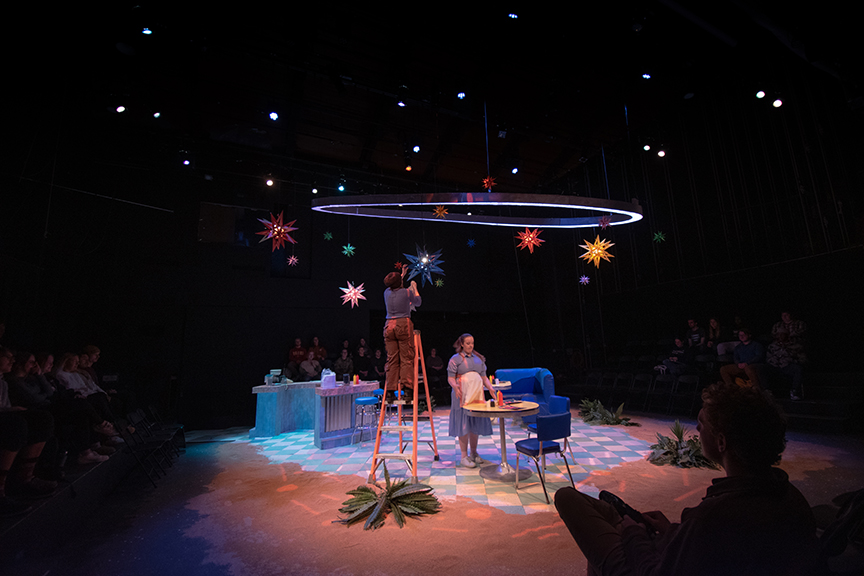
Students imagined and designed every detail of the lighting, sound, scenery, costumes, and props, from retro-inspired floor tiles to colorful stars that hung above the stage.
The idea to give student designers a mainstage opportunity arose during last year’s season planning. Students interviewed for the design positions and were mentored by Department of Music and Theatre faculty and staff Will Coeur, Doris Nash, Kelly Marie Schaefer, Brian Seckfort, and LAS Dean’s Artist-in-Residence and guest director Heather Currie.
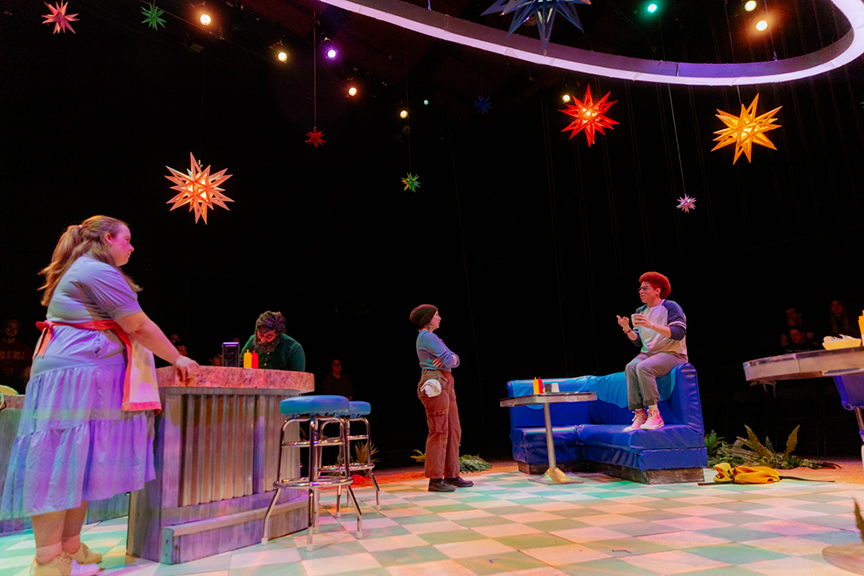
The costumer designer
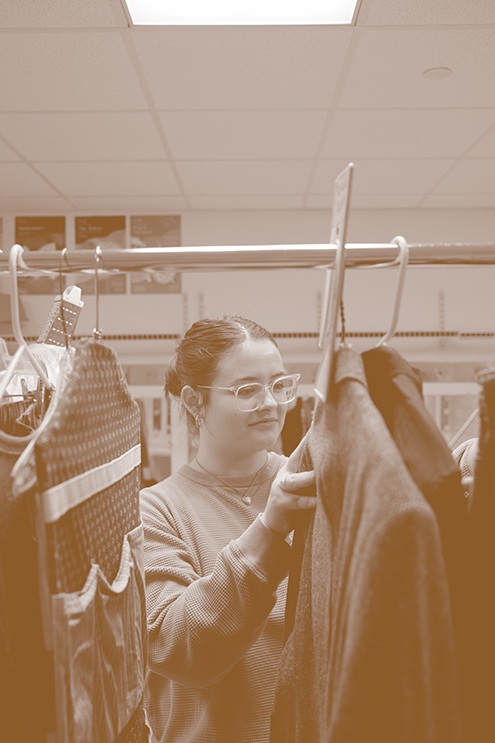
When Rowan Kidd (‘26 apparel, merchandising, and design) heard about the interviews for the design positions, she thought, “I’m probably not going to get it, but I might as well try.” As a new participant in ISU Theatre, she was shocked and excited to be selected as the costume designer.
“I had no idea that it was out of the ordinary for all of the designers to be students,” she said.
Because the audience was seated on stage, Kidd planned costume details that traditionally wouldn’t be visible to a Fisher Theater audience, like science-themed socks for the show’s eccentric Dr. Moxie. Her biggest challenge was designing the costume for pregnant waitress Jessa, which required a pregnancy belly and thoughtful fitting of the actor’s dress. Designing her first show has only solidified Kidd’s interest in professional costume design.
“I want to continue working with ISU Theatre, Kelly, Doris, and everyone here because they’re all amazing,” Kidd said. “It’s helped me know that this is something I can do for the rest of my life.”
“I love all the other designers. They are so much fun, and they’re so talented. It’s been really awesome to have my friends as my collaborators.”
The props designer
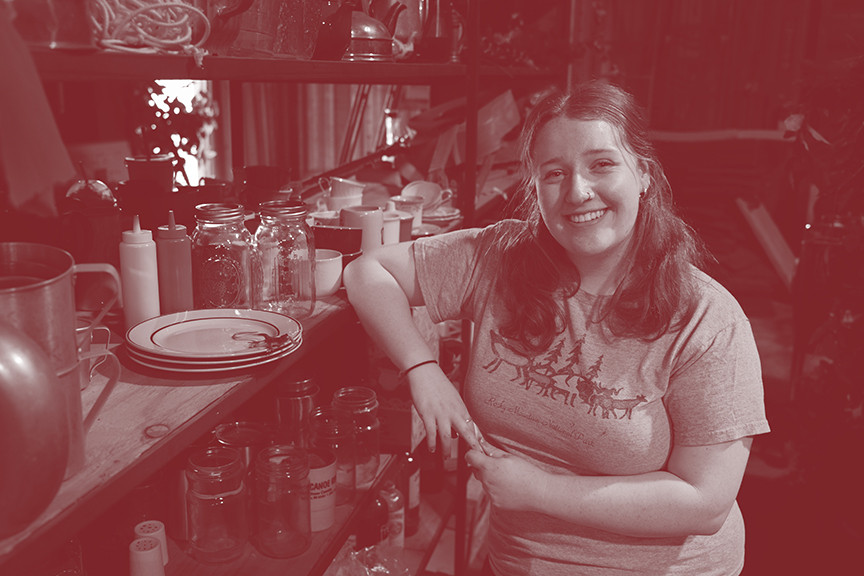
For Macey Brackin (‘24 performing arts), “Always Plenty of Light” was all about details in more ways than one. “This show is about confronting the things that scare us and taking time to be happy in the moments we are given,” she said. “I want the audience to come away thinking about all the little things in life that make it so worth living.”
And it’s the little things Brackin had to think about as props designer, from ketchup bottles to prehistoric bugs. Her biggest goal was to be environmentally conscious, and she went on many “treasure hunts” through ISU Theatre’s storage hub to find items that could be reused or reimagined.
“Being in the round was the hardest bit for me because the audience is right there,” she said. “I made menus that actually had prices and food on them. I hope the props were realistic enough that people didn’t notice they were there.”
Brackin said one of the best parts of the design process was collaborating with her peers. “I love all the other designers. They are so much fun, and they’re so talented. It’s been really awesome to have my friends as my collaborators,” she said.
The sound designer
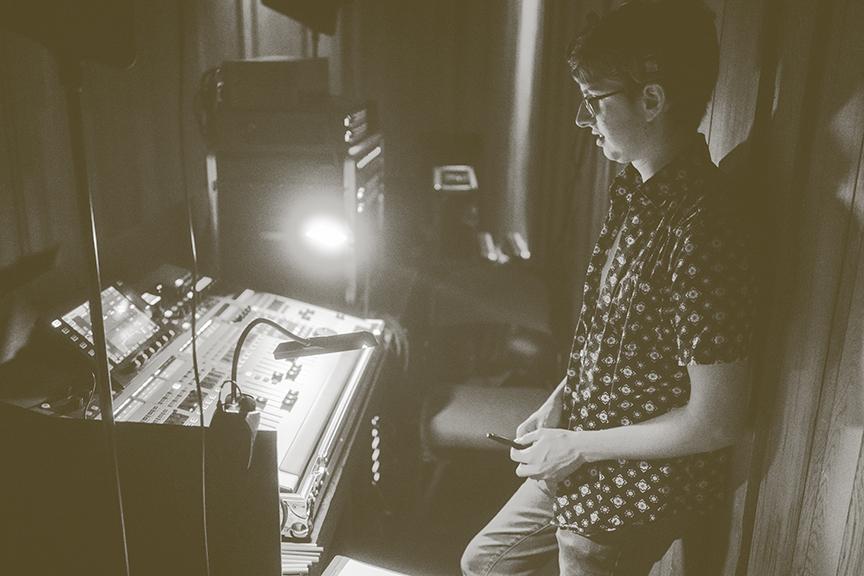
Aaron Mueller (‘24 performing arts) faced many challenges as a first-time sound designer. He had to create a custom speaker set-up and design three distinctive soundscapes: the everyday din of an Arizona diner; a whirlwind trip through time; and the unfamiliar, threatening noises of the Cretaceous period.
Mueller created sound loops with noises such as wind gusts, desert cicadas, and the mysterious cries of creatures from the rainforest. He learned to manually automate his digital audio workstation to pan between four points to surround the audience with directional sound. He even transmitted some sounds through a retro radio.
“Time travel is the sequence I spent the most time on,” said Mueller, who is also a music technology minor. “I took some inspiration from ‘The Wizard of Oz’ and its tornado. I started with low rumbling and wind sounds and whooshing sounds. Large bass speakers underneath the risers provided the primary rumble of the scene.”
Mueller said dynamic conversations with the other student designers helped spark his creativity.
“It was really fun to come up with these grand ideas and then talk about how we make them happen logistically,” Mueller said. “It constantly shifted how we think about specific moments or the show in general.”
“In other places, you have to get to the graduate level even to be able to design, so having an opportunity like this as an undergrad is amazing.”
The lighting designer
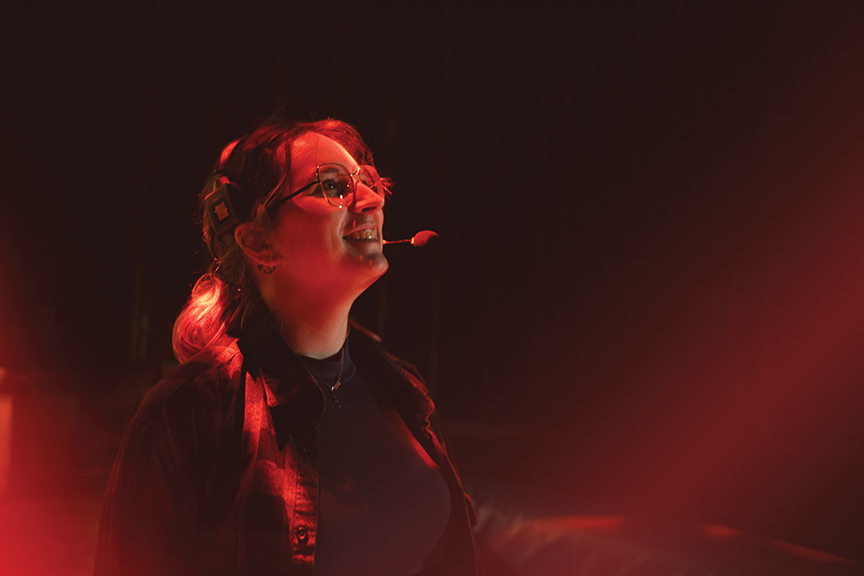
The show’s characters often allude to the stars, which become metaphors for hope and love as the story unfolds. Lighting designer Hannah Johnson (‘24 construction engineering) drew inspiration from those dialogues to design vibrant, dangling stars; a giant metallic ceiling fixture; and a kaleidoscope-inspired color palette for a time travel adventure.
Johnson, who has an electrical construction emphasis in their major and career goals in architectural lighting design, said it was exciting for the designers to reinvent Fisher Theater as a black box studio.
“All of my fundamentals of texture and color and intensity for lighting still remained in this type of space, but it’s so much more intimate,” Johnson said. “It was a lot more challenging to figure out my angles for lighting.”
Johnson said having a student-led design team was special and is an experience that sets ISU Theatre apart.
“In other places, you have to get to the graduate level even to be able to design, so having an opportunity like this as an undergrad is amazing,” Johnson said. “I hope our alumni continue to support us to do these things and come back to see our shows.”
The scenic designer
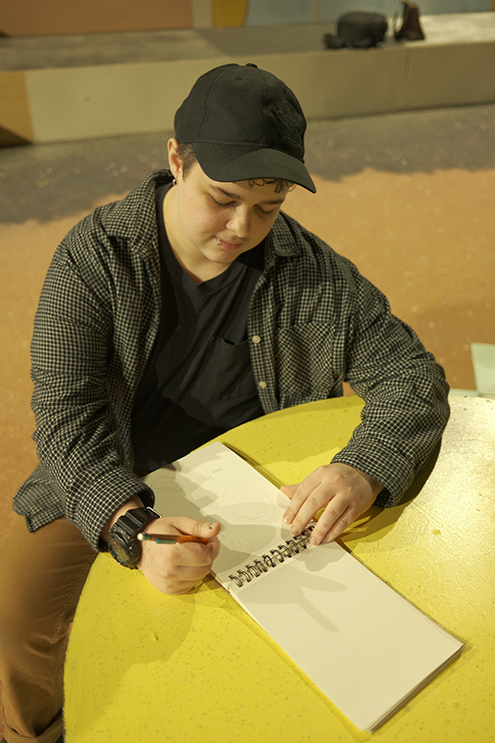
Bobbie Buie (‘25 English, performing arts) also had a big challenge – designing a single set that would function seamlessly in two wildly different locations.
“The show is about fantastical things like dinosaurs and time travel, but also things that are grounded in reality, like a diner and found family,” Buie said. “It was fun to strike a balance between the familiar and funky sci-fi elements.”
Buie focused on the set’s textures, with hand-painted floor tiles that mimicked linoleum; retro, blue vinyl diner booths and stools; and sandy, plant-dotted landscaping that evoked the Southwest. The entire production team met weekly, but Buie also met individually with the other student designers to authentically integrate the speakers, lighting, and props into their scenic design.
“It was a fun challenge to design it in the round,” Buie said. “It’s a very circular show thematically. Instead of considering one image, you have to consider four perspectives. It’s a little mind-boggling.”
Buie said they appreciated the mentorship of ISU Theatre’s resident scenic designer and technical director Brian Seckfort and the partnership of student assistant technical director Callie Server as they brought their research and ideas to life.
